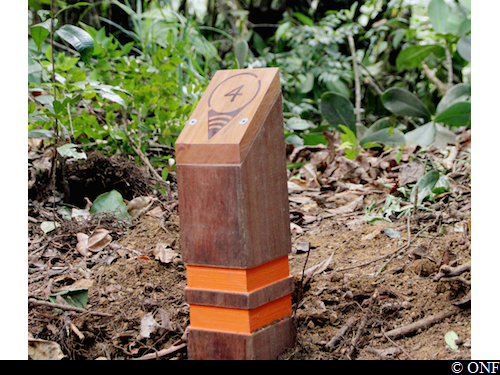
Matouba educational trail
10 points of interest
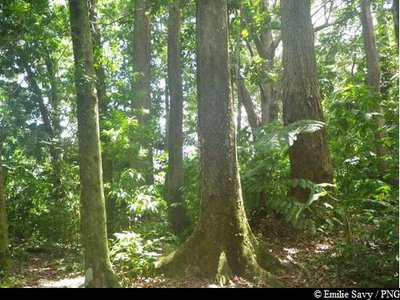
plantation d'Eucalyptus - Emilie Savy / PNG  Flora
FloraEucalyptus
Members of the Myrtaceae family, Eucalyptus trees were originally imported from Australia. They prosper in moist and acidic soil. The bark comes off in patches and the tree exudes a resinous gum when damaged.
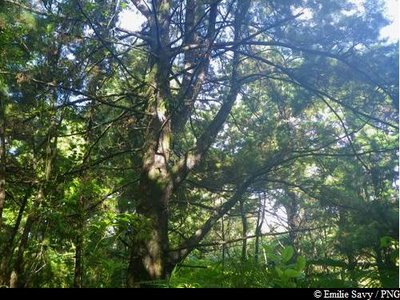
Cyprès - Emilie Savy / PNG  Flora
FloraCyprus trees
The cypress tree belongs to the Cupressaceae family. With an easily recognisable smell, this tree was introduced to Guadeloupe as an ornamental species.
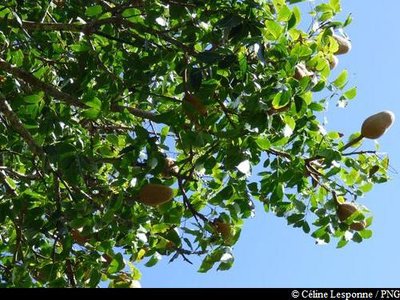
 Flora
FloraWest Indian Mahogany
The West Indian Mahogany (Swietennia macrophylla) belongs to the Meliaceae family. It is a perennial tree with a large, upright, cylindrical bole and small, yellow-green flowers. This species - highly prized by woodworkers on account of its hardness and colouration - was introduced for the purposes of producing timber, leading to the tree being overexploited in its area of origin. It is listed in Appendix II of the threatened species covered by the Washington Convention.
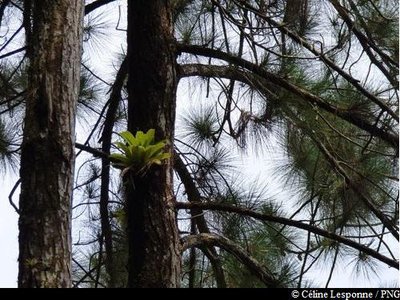
PNG  Flora
FloraCaribbean pine
The Caribbean pine (Pinus caribeae) is a member of the Pinaceae family. Now considered an invasive species in Guadeloupe, this tree was introduced so that its wood could be used as timber. It has noticeably cracked, reddish-brown bark, while the inner bark is highly resinous. It has a slender top which is shaped like a rounded pyramid.
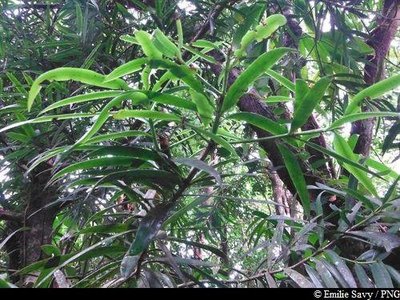
E.Savy - PNG  Flora
FloraThe Yucca Plum Pine
A member of the Podocarpaceae family, the Yucca Plum Pine (Podocarpus coriaceus) is also known locally as the "Wood rose". Closely related to conifers, it is an average-sized tree, with leathery leaves that are dark green on top and similar to an oleander's. Its brown-coloured seeds in their floral buds are particularly eye-catching. It has a thin layer of bark. This species flowers mainly in December/January, with inconspicuous flowers.
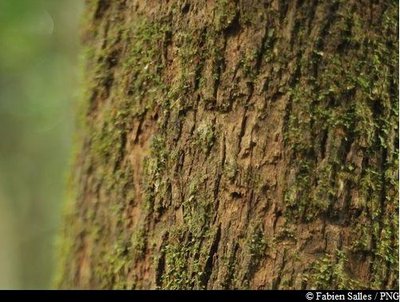
Bois bandé (détail écorce) - Fabien Salles / PNG  Flora
Flora"Bwa bandé"
Richeria grandis belongs to the Phyllanthaceae family. It is a large variety, distinctive for its tough leaves and reddish-brown bark that so often falls victim to rogue extraction. Also known as bwa bandé in Créole, it is renowned for its aphrodisiac qualities. Its wood is used as timber or in carpentry. It has very distinctive, green, grape-like fruits which form small pods and form copiously on its branches.
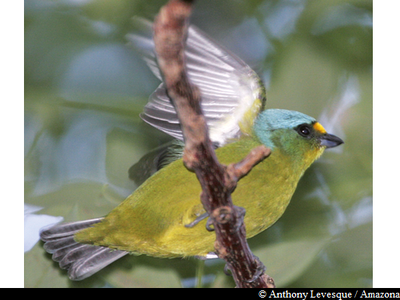
Organiste Louis D'Or - Anthony Levesque / Amazona  Fauna
FaunaAntillean euphonia
The Antillean euphonia (Euphonia musica) is also known as Douvan nwèl in Creole. The bird is distinctive for its bright blue crown and neck, while its cheeks are a darker shade of blue/green. It has a bright yellow breast and chin. Its back is olive and green, while its belly is yellow/green. This sedentary nesting bird is not very common in Guadeloupe, but it is found in the rainforest at medium altitude. It is on the IUCN Red List and is one of the species on to make the list of nesting birds in Guadeloupe.
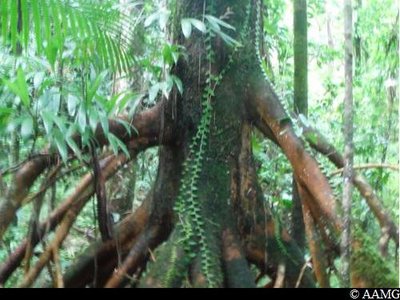
Patétuvier jaune - AAMG  Flora
FloraCandlewood
Symphonia globulifera, also commonly known as the chewstick tree, belongs to the Clusiaceae family. The tree grows in thick, humid and swampy forests. Reaching up to 25-30 metres in height, it has stilt roots and a yellow latex trunk. Its flowers are formed of bright red petals, while its fruits resemble nutmeg, are oval in shape and yellow when ripe. It wood was one used as timber for houses and resin for boats.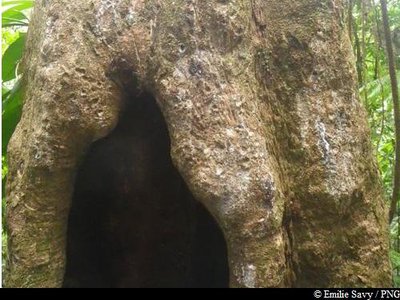
Gommier blanc - PNG  Flora
FloraCandlewood
A very fine specimen of candlewood (about 30m).
The trunk was used by native Americans to make boats called "kanawa". The sap is also used to keep away mosquitoes, but also, in a more contemporary style, during the carnival period by "Groupes à Peau" ("Skin Groups"), known as "MAS"; who use it as incense.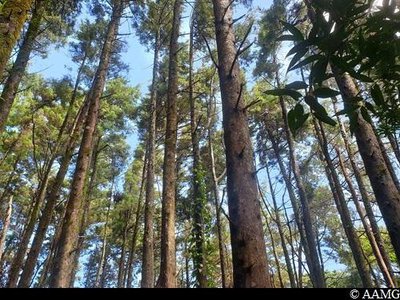
AAMG  Flora
FloraMature forest
This forest was planted from scratch. A pine forest that definitely recalls the forests in mainland France, both visually and for its fragrance.
Description
At the following intersection, turn left, continue for about 100m, then turn left again at the educational trail panel.
Continue as far as the river. Cross the river. Turn left at the next intersection. Follow the trail leading back to the car park.
NB: the ONF has produced the "Sylvascope" for the educational trail. This is a tablet guide introducing you to the forest with a quiz about the environment. The terminals along the way correspond to guide stations. Pick up the tablet from the ONF Sylvathèque in Gourbeyre before setting off on the hike (0590 81 37 57 or 0590 99 28 99). You can also download the Sylvascope app from the Google Play and Apple stores.
- Departure : Matouba forest house
- Arrival : Matouba forest house
- Towns crossed : Saint-Claude
Altimetric profile
Recommandations
Please note: unsupervised car park.
Information desks
Headquarters of the National Park of Guadeloupe
Montéran, 97120 Saint-Claude
The reception and shop are open to the public :
- Monday, Tuesday and Thursday : 8 am to 12.30 pm and 2 pm to 5 pm.
- Wednesday : from 8 am to 1 pm.
- Friday : 8 am to 12.30 pm.
Services : reception, shop, toilets, free parking. Building accessible to people with reduced mobility.
Localisation GPS : Lat: 16,01634 N - Lng: 61,70753 W.
Access and parking
---
Opposite Saint Claude church, take the N3 road towards Matouba.
Pass in front of Matouba church and continue as far as the water tower on your left.
Continue 150m and you will arrive back at the starting point (forest house).
Parking :
Source
Report a problem or an error
If you have found an error on this page or if you have noticed any problems during your hike, please report them to us here:

